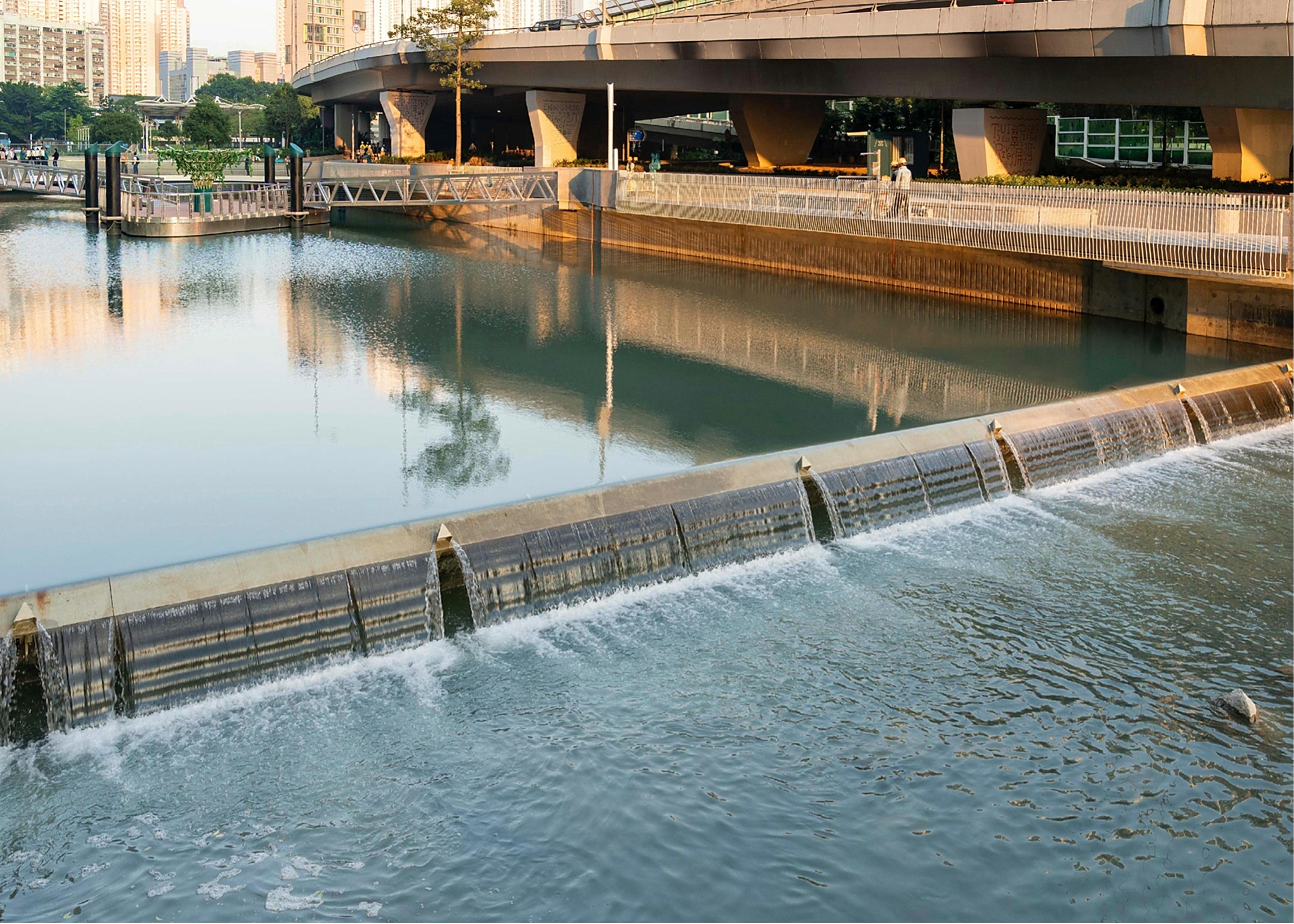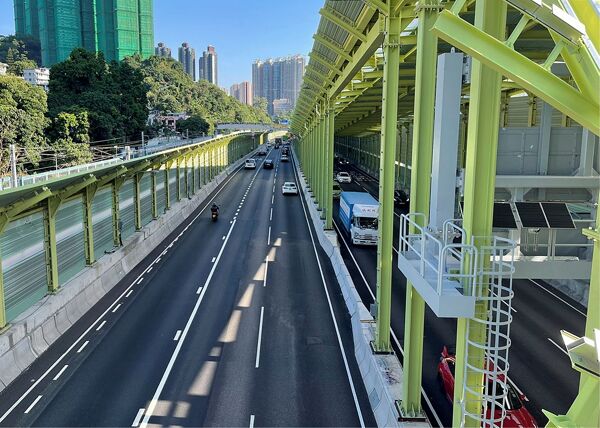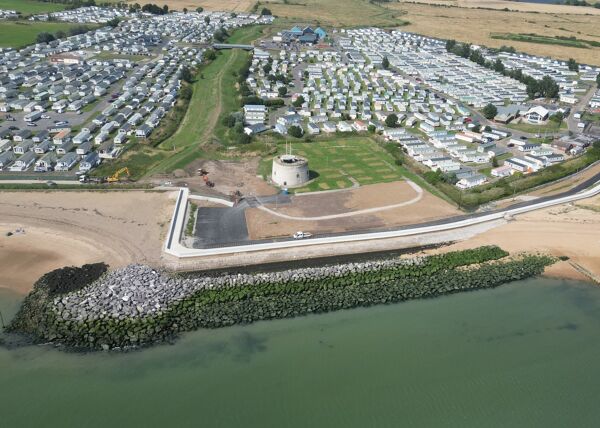
NEC has been used to restore an urban stormwater channel in Kwun Tong, Hong Kong into a vibrant river. The Drainage Services Department (DSD) of the Government of the Hong Kong Special Administrative Region of the People's Republic of China awarded the HK$1,342 million (£136 million) project to Build King-Richwell Civil Joint Venture under an NEC3 Engineering and Construction Contract (ECC) Option C (target contract with activity schedule) in July 2020. The revitalised 1 km long Tsui Ping River in Kwun Tong was completed on programme and within budget in September 2024.
 The project involved installing an automatic bottom-hinged ‘smart gate’ near the downstream end the river channel where it discharges into Victoria Harbour to optimise water levels according to tides and river flows. Flood capacity was increased by lowering the riverbed over 800 m by 0.2–0.7 m and building a 1.2 m high flood wall at certain locations along the nullah.
The project involved installing an automatic bottom-hinged ‘smart gate’ near the downstream end the river channel where it discharges into Victoria Harbour to optimise water levels according to tides and river flows. Flood capacity was increased by lowering the riverbed over 800 m by 0.2–0.7 m and building a 1.2 m high flood wall at certain locations along the nullah.
Six pedestrian bridges, a floating pontoon and six landscaped viewing decks were also installed to create a walkable and accessible river corridor, and a series of measures including bird perches, rock pools and ecological walls were implemented to attract wildlife. The NEC project manager was DSD's chief engineer and the supervisor was AtkinsRéalis Asia Limited (formerly Atkins China Ltd.).
Standard contract suite
DSD Drainage Projects Division senior engineer Antony Wan says NEC is now the standard contract suite for DSD projects. ‘The NEC requirement to act in a “spirit of mutual trust and co-operation” ensured a collaborative working relationship between the parties and external stakeholders’.
He says DSD chose the ECC Option C target option in this case to help manage and share the risk between the parties. ‘This was a complex environmental improvement project within a busy town area and with fluctuating tides and flood flows. It was therefore important that the risks were allocated with the party best able to manage them, together with incentives for the contractor to achieve the best possible project outcome.’
Wan says the NEC processes of early warnings and risk management meetings were actively used by both parties. ‘These helped us to identify and mitigate all issues that might affect the programme and cost at the earliest opportunity, thus keeping the project on track and within the budget’.
He says an example of an early warning was flood risk to construction workers due to limitations of interpreting the 9-day weather forecast from the Hong Kong Observatory. ‘To address this, we collaboratively developed an artificial intelligence system to predict water levels in the river more accurately, which gave staff a two-hour warning to evacuate from the worksite safely.’
NEC compensation events were notified and fairly agreed in accordance with NEC processes, and the regularly updated programme provided an accurate indicator of progress. ‘Despite the challenges of working through the Covid-19 pandemic, the project was successfully completed to the programme and within the budget in September 2024’.
Benefits of using NEC
- NEC requirement to act in a ‘spirit of mutual trust and co-operation’ ensured a collaborative working relationship between the parties and external stakeholders.
- ECC Option C target option ensured risk was allocated to the party best able to manage it and incentivised the contractor to achieve the best possible project outcome.
- NEC early warnings helped the project team to identify and mitigate all issues that might affect the programme and cost at the earliest opportunity.



